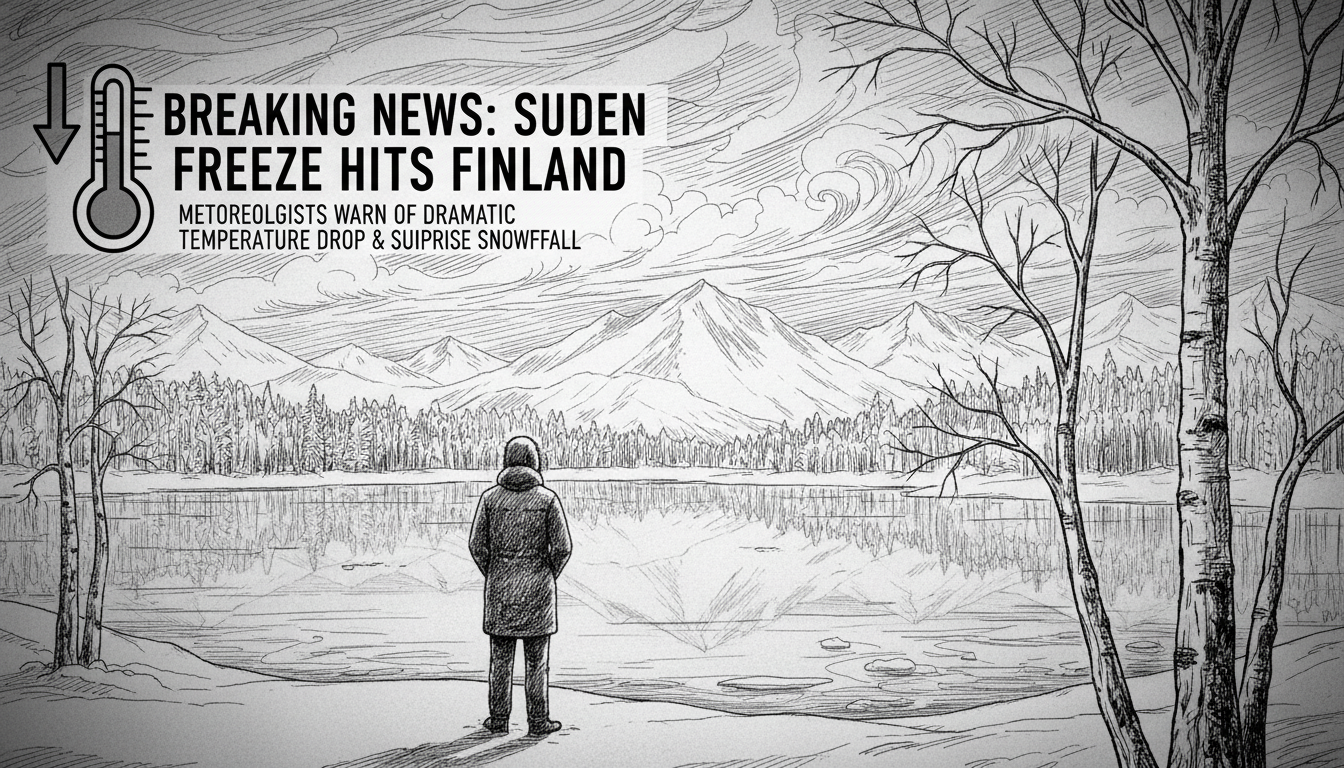Finland faces an abrupt transition to winter conditions as meteorologists detect strong signals of impending cold weather across the country. The northern regions will experience the first freeze while southern areas might see surprise snowfall in coming days.
Meteorologist Markus Mäntykannas reports that thermal winter conditions are developing rapidly. Thermal winter officially begins when daily average temperatures remain consistently below freezing. Northern Finland already meets these criteria while central regions experience increasingly winter-like weather patterns.
"A strong signal of winter's arrival has begun flashing in forecasts for parts of Finland in recent days," the meteorologist stated in his weather blog analysis. He notes that initial signs of first snow in southern regions appeared earlier but precipitation timelines have shifted forward in updated models.
By late next week, winter could arrive with dramatic effect even in southern Finland. First snow conditions require at least one centimeter of ground coverage by morning. The European Centre for Medium-Range Weather Forecasts indicates increasingly probable winter conditions throughout November.
The long-term forecast reveals what meteorologists describe as an alarming collapse in weather patterns. The probability of cold weather depends heavily on westerly air currents. Strong westerlies typically contain polar vortex cold air, while weakened currents increase cold weather likelihood across Finland.
"If westerly currents weaken or collapse far below long-term averages, as current forecasts indicate, the probability of cold weather increases significantly in Finland too," the meteorologist explained.
Finland appears positioned in a collision zone between air masses in coming weeks. Snowfall amounts will depend heavily on low-pressure system trajectories. Northern routes would concentrate snowfall in central Finland while southern paths could bring heavy snow showers to southern regions.
Lapland will experience the coldest conditions regardless of other developments. Mid-November forecasts predict overnight temperatures dropping to -15°C to -20°C in northern areas. Such early deep freezes are notable even for Finland's northernmost region.
This early winter pattern carries implications for energy consumption, transportation, and agriculture. Early cold snaps typically increase heating demand before the deepest winter months. Road maintenance crews across Finland are preparing equipment for potential early snow removal operations.
Finnish residents should monitor developing forecasts closely. The transition appears more abrupt than typical seasonal patterns, potentially catching some unprepared. While southern Finland might not experience permanent winter conditions yet, the sudden shift warrants attention from both citizens and municipal services.
The meteorological phenomenon reflects broader atmospheric pattern shifts observed across Northern Europe in recent years. These rapid transitions between seasons have become more frequent, challenging traditional weather predictability models used throughout the Nordic region.

